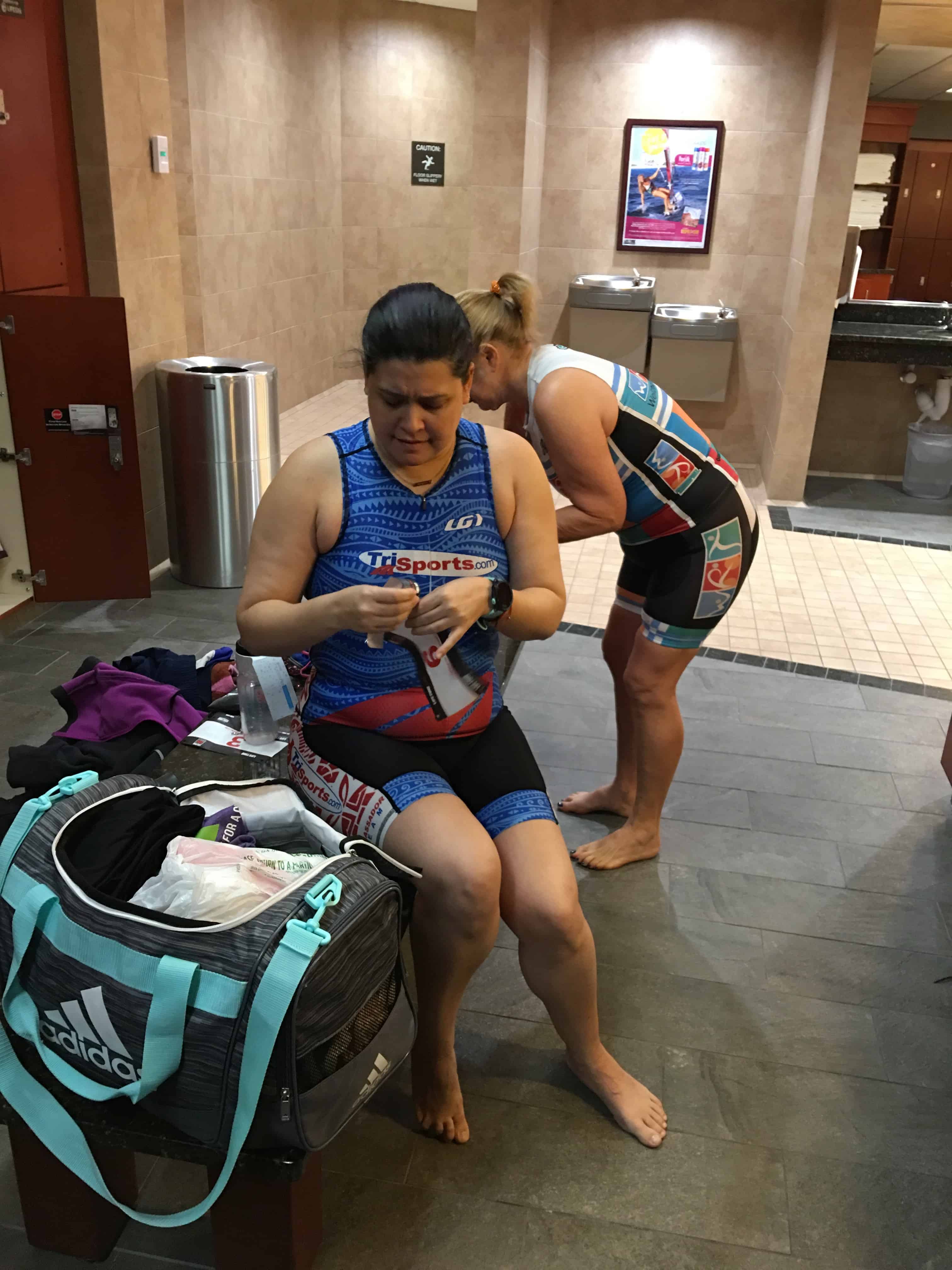Transitions in a triathlon can mean the difference between achieving a personal best or losing precious minutes from your overall time. These seamless in-between stages, which connect swimming, biking, and running, may seem minor but play a significant role in your race performance. A slow or disorganized transition can cost you valuable seconds, while a well-planned approach can give you the edge you need to outperform your competitors.
Vicki Ventura, owner of EventPowerLI and a seasoned expert in triathlon logistics, shares her wealth of knowledge to help triathletes of all levels perfect their transitions. With years of organizing triathlon events and observing thousands of athletes, Vicki knows exactly what it takes to transition like a pro. Here, she unveils her top strategies for faster and more efficient triathlon transitions.
Why Are Triathlon Transitions Important?
It’s easy to overlook or underestimate transitions in your training plan, but they can significantly impact your race outcome. Transitions (T1 and T2) are part of the total race time, and shaving even a few seconds off can lead to a remarkable improvement in your final placement.
Think about it this way: imagine completing an exceptional swim, only to waste minutes fumbling with your gear in transition. Getting efficient at transitions isn’t just about speed; it’s about staying calm, organized, and focused.
Vicki Ventura – Your Guide to Transition Mastery
Vicki Ventura isn’t just a triathlon enthusiast; she’s a mentor for athletes aiming to excel at every step of the race. With her extensive experience as the owner of EventPowerLI, an organization that manages multiple triathlon events annually on Long Island, she’s seen it all. From rookie mistakes to expert-level transitions, Vicki understands what separates average triathletes from standouts.
Through her years of involvement, Vicki has gleaned invaluable insights into transition techniques and has helped countless participants refine their approach. Her expertise and on-the-ground experience make her advice worth its weight in gold.
Top Strategies for Faster Triathlon Transitions
1. Plan Your Transition Setup Like a Pro
Organization is key in creating a smooth, efficient transition. Lay out your gear in the order you’ll need it, and minimize unnecessary clutter. Here’s how to do it:
- Keep your essentials visible – Position your helmet, shoes, and other gear in a logical sequence. This reduces hesitation and fumbling.
- Use a bright-colored towel or mat – A vibrant towel placed under your items can act as a visual marker, making your transition spot easy to locate in a crowded area.
2. Master the “Flying Mount and Dismount”
The flying mount (getting on your bike quickly without sitting down) and flying dismount (hopping off your bike before reaching the dismount line) are advanced techniques commonly used by elite triathletes. While they take practice, these skills can save you precious seconds during T1 and T2:
- Practice clipping in and out of your bike pedals while running or jogging.
- Use unclipped shoes on your bike initially to maintain balance as you learn this method.
3. Minimize Wardrobe Changes
Every second counts during transitions, and fiddling with gear can easily add unnecessary time. Simplify your outfit choices by opting for a well-fitted tri suit. A tri suit eliminates the need for extra gear changes and allows you to move quickly between swimming, biking, and running.
4. Use Baby Powder or Lubricant to Save Time
Sliding into your shoes can be a time-consuming hassle, especially when your feet are wet. Sprinkling a small amount of baby powder inside your running or biking shoes can help your feet slip in more easily. Additionally, applying anti-chafing lubricant around your ankles and feet not only saves time but also prevents discomfort during the rest of the race.
5. Perform “Visual Rehearsals”
Mentally walking through the steps of your transitions can help you feel more prepared on race day. Envision how you’ll move from the swim to the bike (T1) and from the bike to the run (T2). Imagine everything from removing your wetsuit to grabbing your bike and switching to your running shoes. When race day comes, you’ll move with practiced confidence.
6. Invest in the Right Gear
Lightweight, easy-to-use gear is your best ally in fast transitions. Clipless pedals, elastic laces, and quick-dry towels can streamline your process. While these upgrades involve an upfront cost, they pay off with time saved during the race.
7. Make Practice a Priority
Practice transitions as often as you practice swimming, biking, and running. Create mock race scenarios to simulate stress and fatigue, helping you iron out any kinks before the big event. Repetition leads to muscle memory, and muscle memory translates to speed.
Common Mistakes to Avoid in Transitions
Even seasoned athletes can fall into common traps during transitions. Vicki Ventura points out the most frequent errors and how to steer clear of them:
- Wasting time searching for your spot – Memorize your transition location ahead of time and use visual cues or mental markers.
- Overcomplicating your setup – Keep only what you need. Extra items slow you down and create clutter.
- Losing focus – It’s easy to get flustered. Stay calm and stick to your plan.
Why Faster Transitions Are Worth It
Improving your transitions isn’t just about racing faster; it’s about racing smarter. A streamlined transition allows you to maintain momentum and stay competitive, giving you an edge over athletes who neglect to prioritize this critical aspect of triathlon training.
By following Vicki Ventura’s advice, you’ll be on your way to quicker, more efficient transitions that lead to better overall triathlon performances.





